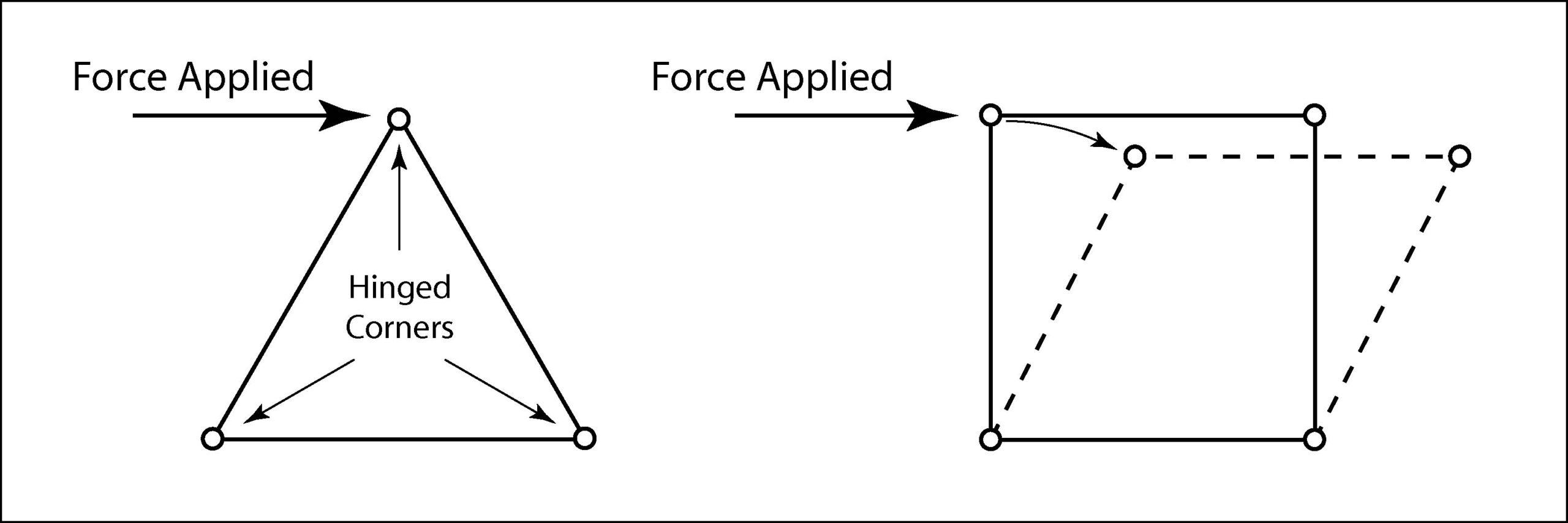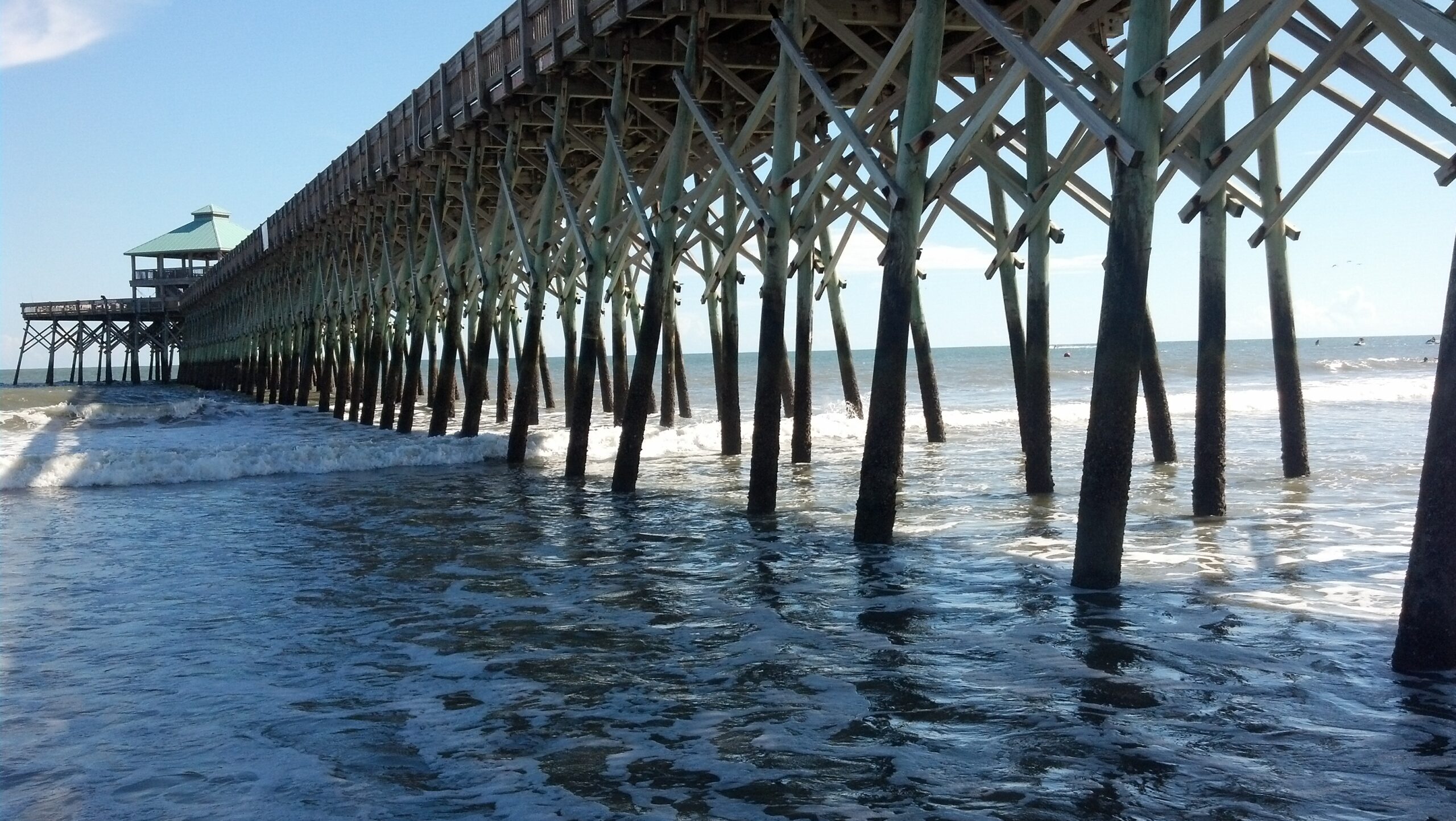Look around you. Triangles are everywhere! Any structure requiring a strong and rigid construction depends on triangles to achieve that goal. Even though they might not be obvious or even seen for that matter, triangles are at work wherever strength and rigidity are important.
The triangle is the only two dimensional polygon that if constructed of rigid members with hinged corners is absolutely fixed in shape up to the compressive and tensile limits of its members. A square, for example, can easily be mis-shapen into a parallelogram.

All other polygons are similarly susceptible to flexing. However, other shapes can be rigidized by rigidizing their internal angles through the use of triangles. The rigidizing triangular members are often called “gussets” and, although they may not extend the total length of the members they rigidize, they effectively make the two connecting members into a single rigid component. When enough internal angles are rigidized in this way, the overall polygon is reduced to a triangle and is, in fact, rigid.

The strength of triangles also extends to the three dimensional world. A pyramid comprised of four triangles is the three dimensional analog of the triangle in the two dimensional world. Any three dimensional object that can be reduced to a collection of triangles by adding triangular gussets is similarly rigid.



The thing I find really cool about triangles is that the mathematics of triangles is wrapped up in a very neat package called trigonometry. Most of us rememer that our study of “trig” was a relatively short course with a “beginning” and an “end.” There is just so much and that’s all there is! I remember my trigonometry text was a little brown book which was, at most, 1/2″ thick. In contrast, most mathematical disciplines seem to have no obvious beginning or end. Perhaps Differential Equasions would serve as an example???
There is also something mysterious about triangles that extends beyond the world of mathematics and engineering. Our government, for example, is made up of three branches, the Executive, the Legislative and the Judicial. Christian religions are based on the “holy trinity” comprised of the Father, the Son and the Holy Ghost. This is not to be confused with the “holy trinity” of onions, celery and green pepper which is at the center of many culinary concoctions including “gumbo.” The triangle is also a central tool and one of the symbols of the Free and Accepted Masons which extend back to before the beginning of recorded history.
Triangles, then, are special not only the physical world but, seemingly, in the intellectual world as well. One can’t help but imagine what brought the simple triangle to its gigantic stature in the universe. One can’t also help but imagine the limits of its strength. Take a moment to ponder the triangle. Isn’t it amazing?
FJF

 Water – De-ionized – Hints
Water – De-ionized – Hints  A Fond Farewell to John Fuchs
A Fond Farewell to John Fuchs  Millipore Testing – Evaluation by Particle Counting
Millipore Testing – Evaluation by Particle Counting  Tape Test for Cleaning Revisited
Tape Test for Cleaning Revisited